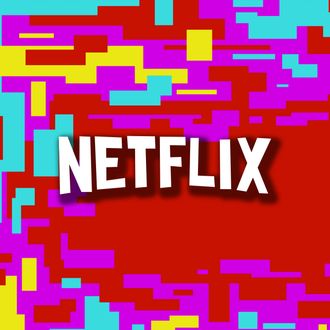
It’s here: As expected, Netflix officially unveiled its new lower-priced, advertising-supported option for U.S. subscribers Thursday. If you don’t mind putting up with about five minutes of commercials every hour and really want to save a few bucks, you can now downgrade to the Basic With Ads tier and pay $6.99 every month — as long as you don’t use an Apple TV to get your Netflix. The company’s support page says Apple’s pricey TV device isn’t currently compatible with the new budget option; nor, for that matter, are older Google Chrome devices that don’t support Google TV. Netflix told 9 to 5 Mac, however, that it plans to push out the lower-cost option to Apple devices “soon.”
If you decide to try out the new Netflix plan, just know that it comes with some trade-offs other than pesky commercials. You’ll be able to stream on only one screen at a time and video quality will be reduced to 720p as if it’s 2005 (or your cheap cell-phone plan). Plus not every show and movie will be available because of preexisting licensing agreements (including some very popular movies.) But you’ll save about $100 every year compared with Netflix’s most popular, $15.50-per-month option. If you want to compromise a little, you can still save $60 per annum by moving over to Netflix Basic, which reduces video quality and screen count but eliminates those annoying words from our sponsors. It goes for $9.99 per month.
Original story from October 13, 2022:
Netflix is about to get a lot less expensive — if you’re willing to accept about five minutes of commercials every hour and don’t mind slightly lower-quality video. Starting November 3, the streaming giant will offer customers in the United States a new Basic With Ads tier priced at $6.99 per month, or less than half the $15.50 it changes for its most popular plan. The move comes barely six months after Netflix — under intense pressure from investors following disappointing subscriber numbers — said it would begin accepting ads on the platform.
According to a blog post from Greg Peters, the company’s chief operating officer, Basic With Ads will offer “everything people love about Netflix, at a lower price, with a few ads in-between.” But there will also be some other important trade-offs consumers will have to make if they want to snag half-price Netflix:
—Not every show and movie in the Netflix catalogue will be available “due to licensing restrictions,” per Peters, who says “from five to 10 percent” of titles will be MIA. (The streamer says it’s working to hammer out new deals to get rights to these titles, but it didn’t offer any timetable for when that might happen, nor give examples of what titles won’t be streamable.)
• In the blog post, Peters said an “average” of four to five minutes of ads will play per hour, popping up before and during shows; in a press call, the company said there would be “no more” than five minutes per hour, and that there will be “tight frequency caps” to make sure viewers don’t see the same commercials over and over. (Yes, that was probably Hulu shade.) Ads will also boast a premium feel: Look for cosmetics and electronics, but not political ads or reverse mortgages. Netflix says it has nearly sold out its initial inventory of ads.
• As with the current ad-free basic plan in the U.S., video quality will be reduced to 720p from the full 1080p offered with Netflix’s most popular standard tier, which while still technically HD, will probably be noticeable if you tend to watch on a nice TV set. If most of your viewing is on laptops or mobile screens, you’ll probably not miss much.
• You won’t be able to download shows for offline viewing, mainly because Netflix hasn’t yet worked out an acceptable way to let consumers do that while still showing them ads.
The $6.99 rate and November launch aren’t a total surprise: The Wall Street Journal and Bloomberg had reports in late August with details very close to what was announced Thursday. Still, the price remains remarkably bold: Netflix, currently the most expensive streamer in the U.S., is now offering its core product with ads at a price below HBO Max, Hulu, Prime Video, Disney+ and most cable premium networks. While its rivals are all hiking fees, Netflix is now, to a degree, the low-priced leader in subscription streaming. What’s more, at least for now, it’s not increasing the cost of its premium level. That’s different from Disney+, which will roll out ads in December and make subscribers pay more in order to avoid seeing them.
In addition to the U.S, Netflix next month will launch Basic With Ads in ten other counties, including Australia, Brazil, Canada, France, Germany, Italy, Japan, Korea, Mexico, Spain and the United Kingdom. The goal is to eventually roll out the ad-supported tier around the world, but Netflix likes to test new products first before going global (though these markets represent a huge part of the company’s subscriber base).
As expected, Netflix is also making moves to be more transparent with its audience metrics, something required by advertisers who need to know if folks are actually watching the ads for which they’re paying. The streamer said it has officially signed up for Nielsen’s Digital Ad Ratings product, which measures consumption across platforms. Ratings data will begin to come online sometime next year, and will “eventually” be reported via Nielsen’s recently-launched Nielsen One system. Translation: Unlike the U.K., where Netflix viewing will soon be available on a daily and weekly basis, it might be a bit longer before we know how many people are watching specific titles in the U.S. But after years of very limited data, today’s announcement means such information is closer than ever to becoming a reality.


